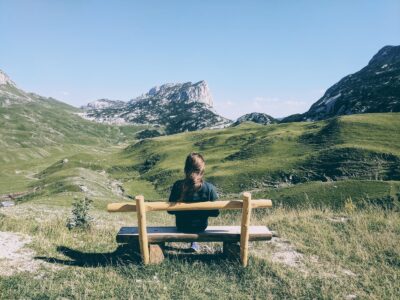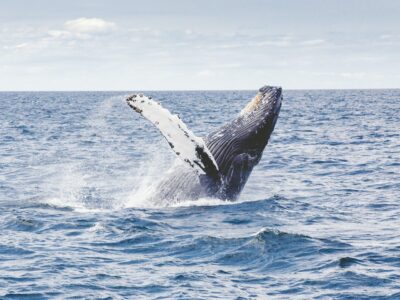As both a woman of faith and one who takes conscious steps to adopt earth-friendly practices in my life, I have recently found myself increasingly fascinated by the extent to which the story of Creation itself embodies ecological principles. Compelled by Creation, I decided to engage in an open-ended reflection on the day-by-day Genesis story.
And God said, “Let the land produce living creatures according to their kinds: the livestock, the creatures that move along the ground, and the wild animals, each according to its kind.” And it was so. God made the wild animals according to their kinds, the livestock according to their kinds, and all the creatures that move along the ground according to their kinds. And God saw it was good. Genesis 1: 24-25
If the story of Genesis were a bedside novel, Day Six of Creation might be considered its climax for us readers, since it’s at this point that we—and our beloved household pets—enter the plot.
Reflecting on this textually longest day of Creation, my greatest takeaway beyond the ever-present display of our Maker’s omnipotence lies in the power of the Earth and in its starring role in our cycle of life. By the verbal decree of God, first land creatures sprang forth from the Earth, followed by man, as is emphasized subsequently in Genesis (2:7; 3:19), as well as in 1 Corinthians 15:47. Not only does our bountiful Earth serve as our source, but it also sustains us throughout our lives, nourishing our bodies and our souls. It’s only fitting, then, that when our physical beings extinguish, they return to the Earth. Ultimately, in creating the Earth, God the Father has given us our collective Mother and our home for life.
Our Animals
Those of us who have had the good fortune to travel extensively can attest to the staggering diversity in the animal kingdom throughout the world. Maybe you’ve trekked off to Pakistan to glimpse a curly-horned Markhor, to Russia to take in a swollen-nosed Saiga Antelope, to Madagascar to encounter an Aye-Aye on a night hike, or to southeast Asia to cross paths with a ogling Tarsier.
Whether you’ve learned about these and other uncommon animals by viewing them in the wild or from magazines and documentaries, you’ll note their fantastically odd features, specifically designed by our Maker to allow them to adapt perfectly to their surroundings. You’ll also remark that, lamentably, many of these species are rapidly disappearing from our animal kingdom. A recent CBS piece reveals animal populations throughout the world have declined nearly 70% over the past 50 years, due to the warming climate, pollution, and environmental destruction resulting from human consumption. When confronted with this astounding fact, we can only wonder how these gifts from God have gone by the wayside, and what we can do to set things back on track, as mandated by His intent.
Then God said, “Let us make mankind in our image, in our likeness, so that they may rule over the fish in the sea and the birds in the sky, over the livestock and all the wild animals, and over all the creatures that move along the ground.” So God created mankind in his own image, in the image of God he created them; male and female he created them. God blessed them and said to them, “Be fruitful and increase in number; fill the earth and subdue it. Rule over the fish in the sea and the birds in the sky and over every living creature that moves on the ground.” Then God said, “I give you every seed-bearing plant on the face of the whole earth and every tree that has fruit with seed in it. They will be yours for food. And to all the beasts of the earth and all the birds in the sky and all the creatures that move along the ground — everything that has the breath of life in it— I give every green plant for food.” And it was so. – Genesis 1:26 – 29
We the People: Our Rights and Responsibilities
Overall, Day Six of the Creation story communicates messages that extend well beyond the already astonishing feats of willing land animals and humans to arise from the Earth. Throughout the story of Creation, we observe our Maker’s placement of a highly complex and intricately balanced system of global life involving its essential elements—the ground; the sky; the seas; the sun, moon, and stars; plants; animals; humans, and time. It is here in these final verses of Genesis One God really spells out the interconnectedness that links everything together. It is here that everything falls into place, so to speak. Plants and fruit-bearing trees self-propagate, already an awe-inspiring capacity, shine all the more brightly when we view it within the scope of Day Six: God put this process into place to ensure his creatures be nourished, breathe and frolic in the change of seasons Every bit and piece of the system upholds another, and in this way, God’s creatures big and small are afforded the opportunity to inhabit this Earth in communion with each other in harmony, like a perfectly-tuned orchestra.
In these final verses of Genesis One, in addition to delivering this perfect Creation, God also conveys to us our first responsibility as humans: maintaining his Creation. “Ruling over” other animals and “subduing” the land may at first glance seem like outright declarations of power, and in some senses they are. Yet, along with his empowerment of mankind, our Maker likewise hands off us the accompanying responsibility of caring for his benevolent gifts. The Earth, in its initial state of plenitude, gave rise to us by the will of God, and we must collaborate in restoring its balance. As the iconic American folk song states, “this land is your land, this land is my land” — our land, our responsibility to act, our will to praise and glorify Him, coming together as families, friends, and communities as we restore grace to our planet.





 Copyright
2024
Root and Vine
Copyright
2024
Root and Vine